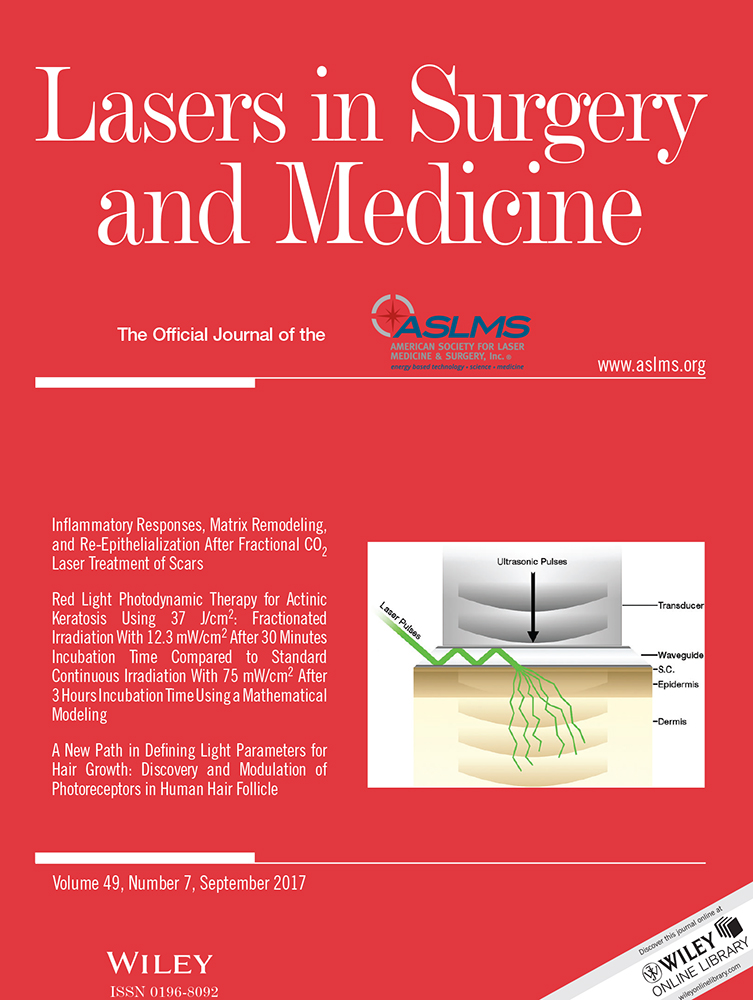Red light photodynamic therapy for actinic keratosis using 37 J/cm2: Fractionated irradiation with 12.3 mW/cm2 after 30 minutes incubation time compared to standard continuous irradiation with 75 mW/cm2 after 3 hours incubation time using a mathematical modeling
Abstract
Objective and Study Design
Photodynamic therapy (PDT) is an emerging treatment modality for various diseases, especially for dermatological conditions. Although, the standard PDT protocol for the treatment of actinic keratoses in Europe has shown to be effective, treatment-associated pain is often observed in patients. Different modifications to this protocol attempted to decrease pain have been investigated. The decrease in fluence rate seems to be a promising solution. Moreover, it has been suggested that light fractionation significantly increases the efficacy of PDT. Based on a flexible light-emitting textile, the FLEXITHERALIGHT device specifically provides a fractionated illumination at a fluence rate more than six times lower than that of the standard protocol. In a recently completed clinical trial of PDT for the treatment of actinic keratosis, the non-inferiority of a protocol involving illumination with the FLEXITHERALIGHT device after a short incubation time and referred to as the FLEXITHERALIGHT protocol has been assessed compared to the standard protocol. In this paper, we propose a comparison of the two above mentioned 635 nm red light protocols with 37 J/cm2 in the PDT treatment of actinic keratosis: the standard protocol and the FLEXITHERALIGHT one through a mathematical modeling.
Methods
This mathematical modeling, which slightly differs from the one we have already published, enables the local damage induced by the therapy to be estimated.
Results
The comparison performed in terms of the local damage induced by the therapy demonstrates that the FLEXITHERALIGHT protocol with lower fluence rate, light fractionation and shorter incubation time is somewhat less efficient than the standard protocol. Nevertheless, from the clinical trial results, the FLEXITHERALIGHT protocol results in non-inferior response rates compared to the standard protocol.
Conclusion
This finding raises the question of whether the PDT local damage achieved by the FLEXITHERALIGHT protocol (respectively, the standard protocol) is sufficient (respectively, excessive) to destroy actinic keratosis cells. Lasers Surg. Med. 49:686–697, 2017. © 2017 Wiley Periodicals, Inc.




